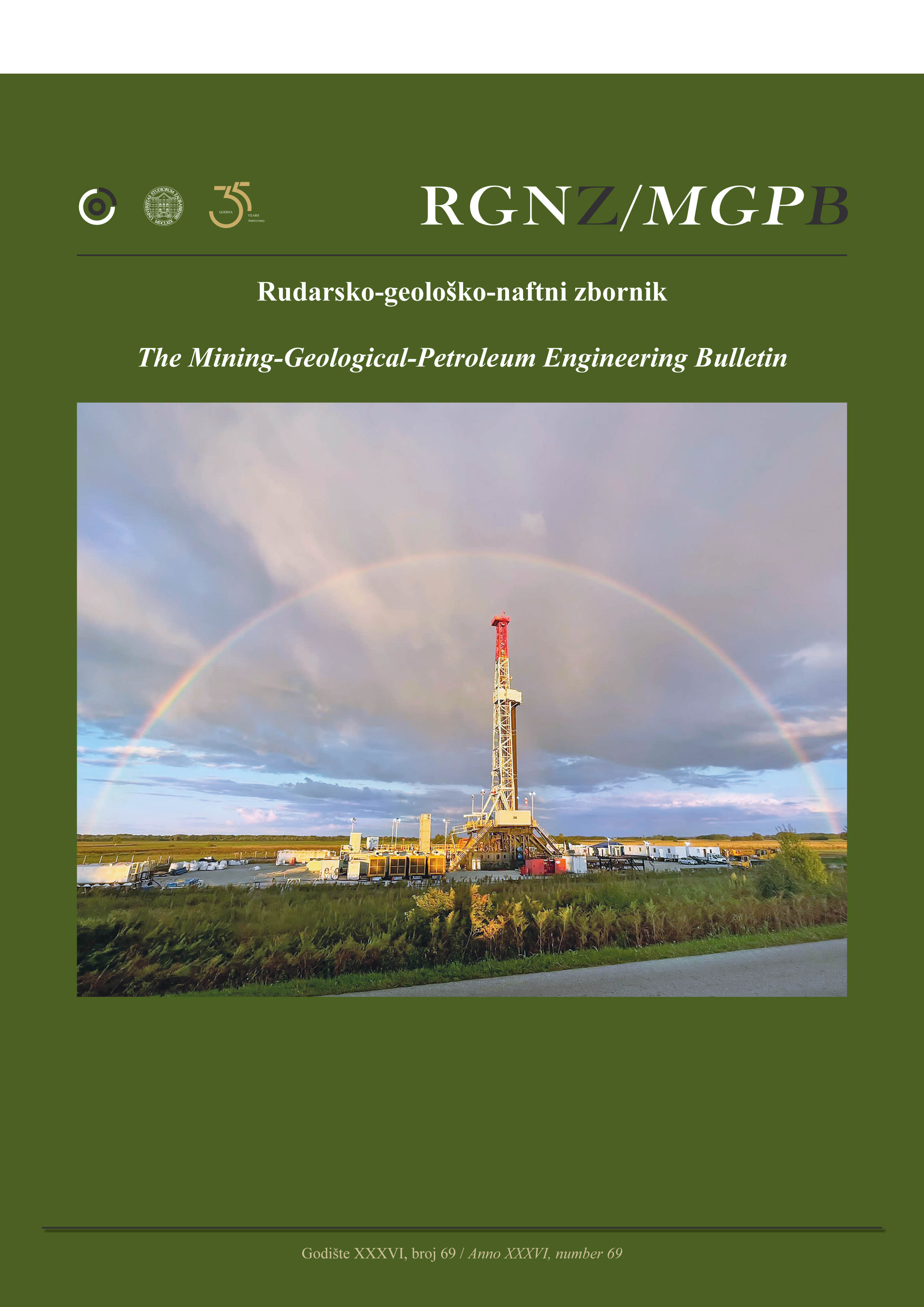Reservoir Quality Evaluation: Unveiling Diagenetic Transformations through Mineralogical and Petrophysical Analyses of the Upper Miocene Lacustrine Sandstones in the Pannonian Basin System, Croatia
DOI:
https://doi.org/10.17794/rgn.2024.3.12Keywords:
sandstone reservoirs, diagenesis, porosity, North Croatian Basin, Late MioceneAbstract
The Upper Miocene lacustrine sandstones of the North Croatian Basin, located in the southwestern Pannonian Basin System, represent significant reservoirs for hydrocarbon exploration, yet their diagenetic evolution remains poorly understood. This study offers a comprehensive investigation into the diagenesis of these sandstones, analyzing samples from 14 exploration wells in the Sava and Drava depressions. Using petrographic analyses, scanning electron microscopy with energy-dispersive X-ray spectroscopy (SEM-EDS), X-ray diffraction (XRD), and petrophysical measurements, we aimed to explain the diagenetic processes affecting reservoir quality and hydrocarbon productivity. Our results reveal a consistent grain size distribution, modal composition, and diagenetic alterations across both depressions. Compaction, evidenced by evolving grain contacts and pressure dissolution, leads to a depth-dependent reduction in porosity. Carbonate cements, notably calcite and Fe-dolomite/ankerite, are primary contributors to reduction of primary intergranular porosity, alongside clay minerals, quartz, feldspar, etc. Secondary porosity resulting from dissolution and redistribution processes also significantly influences overall porosity evolution. Clay minerals, detrital and authigenic, exhibit a complex interplay with other diagenetic processes, further reducing porosity and permeability. Authigenic clay minerals, including illite, chlorite, and kaolinite, act as pore-filling cement or coatings, hindering fluid flow. Paragenetic processes delineate the intricate relationship between mineralogical transformations and petrophysical properties, defining reservoir quality. Understanding diagenetic dynamics is essential for predicting reservoir quality, fluid migration pathways, and hydrocarbon productivity. This study fills a crucial knowledge gap regarding the diagenesis of the Upper Miocene lacustrine sandstones in the southwestern part of the Pannonian Basin System, providing insights vital for the energy sector and supporting sustainable resource development in the region.
Downloads
Additional Files
Published
How to Cite
Issue
Section
License
Copyright (c) 2024 Mario Matošević, Nenad Tomašić, Adaleta Perković, Štefica Kampić, Marijan Kovačić, Davor Pavelić

This work is licensed under a Creative Commons Attribution 4.0 International License.
Creative Commons-BY
Authors who publish with this journal agree to the following terms:
In agreeing this form, you certify that:
- You read the ethical codex of the RGN zbornik available at journal web.
- You submitted work is your original work, and has not previously been published and does not include any form of plagiarism.
- You own copyright in the submitted work, and are therefore permitted to assign the licence to publish to RGN zbornik.
- Your submitted work contains no violation of any existing copyright or other third party right or any material of an obscene, libellous or otherwise unlawful nature.
- You have obtained permission for and acknowledged the source of any illustrations, diagrams or other material included in the work of which you are not the copyright owner.
- You have taken due care to ensure the accuracy of the work, and that, to the best of your knowledge, there are no false statements made within it.
- All co-authors of this submitted work are aware of, and in agreement with, the terms of this licence and that the submitted manuscript has been approved by these authors.
Publication licence
You retain copyright in your submitted work, according to journal license policy (CC-BY). By signing this form you agree that RGN zbornik may publish it under the publication licence. In summary the licence allows the following:
Anyone is free:
- To copy, distribute, display, and perform the work.
- To make derivative works.
Under the following conditions:
- The original author must always be given credit.
- The work may not be used for commercial purposes.
- If the work is altered, transformed, or built upon, the resulting work may only be distributed under a licence identical to this one.
Exceptions to the licence
In addition to publishing the work printed under the above licence, RGN zbornik will also enable the work to be visible online.
The journal editorial can change the licence rules anytime but it cannot retroactively restrict author(s) rights.


